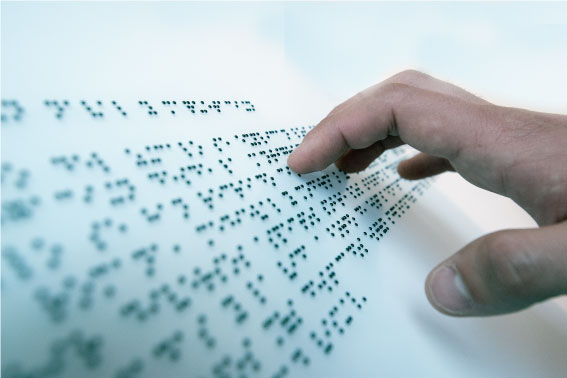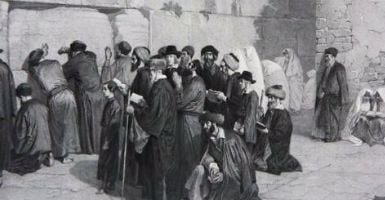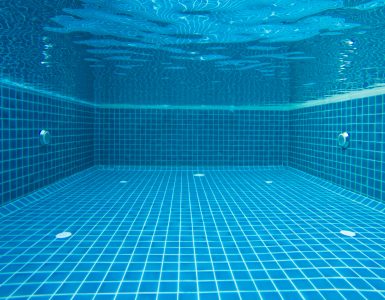[In the previous essay in this series (Parshas Matos-Masei), we discussed whether the Mitzva of v’Kidashto applies to a Kohen who is a Ba’al Mum.]
Recent Poskim have considered whether poor eyesight constitutes a Mum. The Torah in Parshas Emor enumerates the Mumin that disqualify Kohanim, which include “Dak” and “Tevalul b’Eino” (21:20). The Gemara in Bechoros explains (44a):
“b’Eino” – this includes any [blemish] of the eye. From this they said: “[If a Kohen has] two eyes below, two eyes above, one eye above and one eye below (in other word, his eyes are not positioned normally on his face), or he sees the room and the attic at once (referring to a sight defect that does not allow him to focus), or he can speak to his fellow but another person says, “He is looking at me” (his eyes do not look straight ahead of him)[1]…
“Iveir” – whether he is blind in both eyes or in [just] one eye. “Chavrur” (a person who appears to have white dots in his eyes). “Mayim haKevuim” (a person whose eyes are constantly filled with tears, impeding his vision). How do we know [that the above constitute Mumin]? The Torah states: “Ish Iveir – A blind man” [which includes all of these conditions].
Rava said: “Why does the Torah need to say “Ish Iveir”, “Dak”, and “Tevalul b’Eino”? [Surely, “Ish Iveir” should include all types of sight defects!] They are [all] necessary. For if the Torah had only stated, “Iveir” [we would say that it constitutes a Mum] because he has no [sight] at all.[2] But [a person suffering with] “Chavrur” or “Mayim haKevuim” who does have sight (but these conditions prevent him from seeing) – would not be [considered a Ba’al Mum). This is why the Torah states, “Ish” (to include Chavrur and Mayim haKevuim).
And if the Torah had [only] stated “Ish [Iveir]” [we would say that it constitutes a Mum] because he has no sight at all. However, if his sight is only impaired we would not have said [it constitutes a Mum]. That is why the Torah states, “Dak” (to include other conditions in which his sight is merely impaired).
The Torah does not only disqualify a Kohen whose eyes have a different position on his face or with strabismus, but even one with minimal or impaired vision. This does not only include blindness, but also various diseases that prevent him from being able to see (though there is nothing wrong with his eyesight per se), as well as near- or far- sightedness (where he can see, though not perfectly).
Later the Gemara enumerates several other eye conditions that constitute Mumin. One is “Sachi Shemesh”, which, as the Gemara explains, refers to somebody who “hates the sun”. Rashi explains that this describes a person with a condition that prevents him from seeing when the sun is shining. The Rambam explains that it refers to somebody who squints when his eyes are exposed to light and has difficulty seeing.
This appears to present a great stringency with regard to Mumin of the eye: A lack of function constitutes an actual Mum. This is not the case with any other bodily organ or limb. Perhaps the reason for this stringency is due to the primary importance of the sense of vision[3], as well as the fact that a Kohen simply cannot perform many of the Avodos in the Beis haMikdash if he is unable to see.
The Gemara does not define the extent of the lack of eyesight that would constitute a Mum. In fact, today we know that the majority of people do not have 20-20 eyesight. Would that mean that the majority of Kohanim are Ba’alei Mum?!
The Gemara states (ibid. 37a) that the definition of a Mum that disqualifies an animal as a Korban, is “an exposed, permanent blemish”. Tosfos ask why, if so, is an animal whose teeth have fallen out not considered a Ba’al Mum? In fact, someone who knocks his slave tooth out must allow the slave to go free – clearly, a missing tooth constitutes a Mum. Tosfos answer:
A slave is different as the Pasuk reveals [that knocking out his tooth brings about his freedom]. However, in this case [it is not considered a Mum because] it is natural for teeth to fall out due to old age, thus [the “blemish of missing teeth] is not comparable to lameness or blindness. However, this still requires [further] explanation, for eyesight too [weakens] due to old age.
Tosfos establish a principle that a “blemish” that occurs in the natural course of aging does not constitute a Mum. However, they are unable to reconcile this with the fact that eye-conditions do constitute Mumin (as delineated above) even though they include normal age-related issues. We will attempt to resolve this question in the following paragraphs.
The Acharonim ask that Tosfos should have proven from an explicit Pasuk that a lack of teeth does not constitute a Mum. The Torah forbids offering an animal as a Korban if it is fewer than eight days’ old. If a lack of teeth would constitute a Mum, there should have been no need for the Torah to have issued this command given that an animal’s teeth do not begin to grow until its eighth day of life (in fact, the teeth beginning to emerge is one of the signs that an animal has reached its eighth day of life).
The obvious answer is that there is a difference between the absence of teeth that haven’t grown yet in the normal course of development and the loss of those teeth at an older age. Though congenital Mumin do exist, these only include unusual blemishes or disorders, not the normal developmental stages of animals or humans.
If so, we can suggest an answer to Tosfos’ question: there is a distinction to be drawn between teeth that have fallen out and deteriorating eyesight. Teeth falling out is not a disease but a natural process of weakening. [Severely] poor eyesight, by contrast, is due to some form of disorder. Something that occurs naturally with aging is indeed not a Mum, just as the absence of certain features or structures during early development is not a Mum. Poor eyesight, by contrast, is not necessarily an age-dependent phenomenon as many young people have poor eyesight. It would therefore be considered a Mum.
However, the Torah itself indicates that deteriorating eyesight is a natural consequence of the normal aging process. The Pasuk relates that when Moshe died, “his eyes had not weakened” (Devarim 34:7), implying that he was unusual in this respect. We can suggest that the Torah distinguishes between diminished eyesight at extremely old age (which is normal) and at an earlier age (which could be caused by a disease of the eye).
Returning to our earlier question regarding the definition of diminished eyesight that would render a Kohen a Ba’al Mun. Would any Kohen without perfect eyesight be considered a Ba’al Mum?
In light of the above discussion, we may contend that poor vision is only considered a Mum if it is due to a disorder of the eye, such as a cataract or other pathologic process. However, near- or far-sightedness that commonly develops in a person’s youth (until it stabilizes in early adulthood) and is not due to a disease process would not be considered a Mum. This is also the conclusion of the Divrei Malkiel (4:31).
Rav Yitzchak Zilberstein Shlit”a cites Rav Elyashiv zt”l who maintained that poor vision is not a Mum “because when the person draws close he can see well”. This is a fascinating ruling. Presumably, even if poor vision would constitute a Mum, it would not apply to every person who does not have 20-20 vision. For example, we would surely not say that somebody whose vision can be corrected with simple single-vision lenses is a Ba’al Mum! However, according to Rav Elyashiv this is only because he can see something clearly if he stands right next to it. If so, one could speculate that a person who is very near-sighted would be considered a Ba’al Mum given that he cannot see well even when he comes very close to something (unless he brings the item right up to his eyes which is an abnormal method of looking at something).
An additional consideration would be the Rambam’s opinion (mentioned above with regard to the Sachi Shemesh) that if a person needs to squint in order to see properly he is considered a Ba’al Mum. Why should there be a difference between a person who needs to squint in order to see properly and one who needs to come close to something in order to see it? In fact, most people with myopia need to squint in order to see clearly. It seems likely that the Rambam referred to some other condition[4] – this requires further examination.
At any rate, this exclusion would only apply to a person whose eyesight has simply deteriorated. A person with impaired vision due to an ophthalmologic condition – e.g., a cataract – would presumably be considered a Ba’al Mum.
[1] [Editor’s note: The latter two defects seem to be describing forms of strabismus.]
[2] I.e., it is as if he has no eyes at all.
[3] [Editor’s note: Chaza”l consider a blind person as if he is dead, which, although clearly allegorical, is not the case for people with a deficit of any other senses (e.g. hearing or speaking). This indicates the significance of vision in the “eyes” of the Torah. In addition, in the time of Moshe Rabbenu and Chaza”l, corrective lenses did not exist, and even only moderate refractive errors would have led to significant disability.]
[4] [Editor’s note: Since the Rambam was discussing the Mum of Sachi Shemesh, it is possible that he is referring to someone who is so sensitive to bright light that he squints in sunlight – ostensibly even in normal conditions and not just in extremely bright outdoor settings – and not someone who squints to focus on an object.]















Add comment